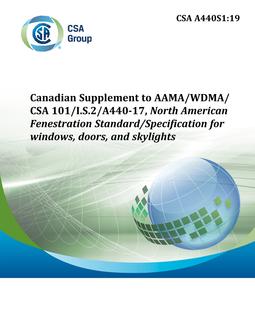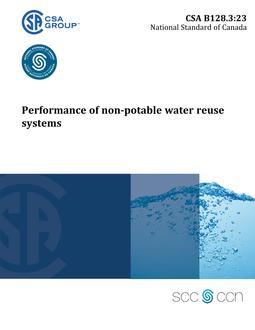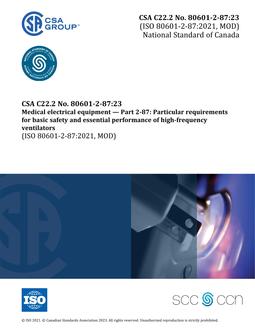
CSA A440S1-19
Click here to purchase
Scope
1.1 This Supplement is for use in conjunction with AAMA/WDMA/CSA 101/I.S.2/A440-17 and contains additional requirements for Canada.
1.2 This Supplement provides simplified methods to calculate the minimum performance levels for resistance to water penetration, wind loads, and snow loads for fenestration products on buildings in Canada.
This Supplement includes a simplified procedure in Clause 4.2 for calculating the minimum performance levels for resistance to winds and snow loads. Clause 4.2 of this Supplement also allows the use of more detailed procedures specified in the National Building Code of Canada (NBC) for determining the coefficients Ce, Ct, Cq, and Cp.
Note: The edition of the NBC in effect can vary by jurisdiction.
In some cases, the simplified procedure specified in Clause 4.2 of this Supplement can result in higher values than those attained by using the procedures in the building code.
The simplified procedure to calculate specified wind load in Clause 4.2.2 applies only to buildings on level terrain, having a slope no greater than 1:10. For buildings that do not meet this criteria (e.g., buildings on steeper slopes, hills, or escarpments) wind load values are calculated in accordance with the requirements of the building code.
The simplified procedure to calculate specified snow load in Clause 4.2.4 applies only to small, simple, light-frame buildings. For buildings that do not meet this criteria, snow load values are calculated in accordance with the requirements of the building code.
Calculating wind load value using Tables 1 to 5 in Clause 4.2 can result in a higher wind load value than if the calculation is done using the formula in Clause 4.2. The higher wind load can result in a higher performance grade product being specified than is required by the applicable building code.
1.3 Annex B introduces the issue of climate change and its associated effects on fenestration in buildings. It is anticipated that fenestration designers will need to incorporate changes in climate loads resulting from climate change into the fenestration product design. Annex B provides some information on this topic for consideration by designers. As information on climate change evolves, so too will AAMA/WDMA/CSA 101/I.S.2/A440 and the information available to designers.
1.4 In this Supplement, “shall” is used to express a requirement, i.e., a provision that the user is obliged to satisfy in order to comply with the publication; “should” is used to express a recommendation or that which is advised but not required; and “may” is used to express an option or that which is permissible within the limits of the publication. Notes accompanying clauses do not include requirements or alternative requirements; the purpose of a note accompanying a clause is to separate from the text explanatory or informative material. Notes to tables and figures are considered part of the table or figure and may be written as requirements. Annexes are designated normative (mandatory) or informative (non-mandatory) to define their application.
Product Details
- Edition:
- 4th
- Published:
- 03/01/2019
- ISBN(s):
- 9781488320248
- Number of Pages:
- 72
- File Size:
- 1 file , 5 MB
- Product Code(s):
- 2426984, 2426984


